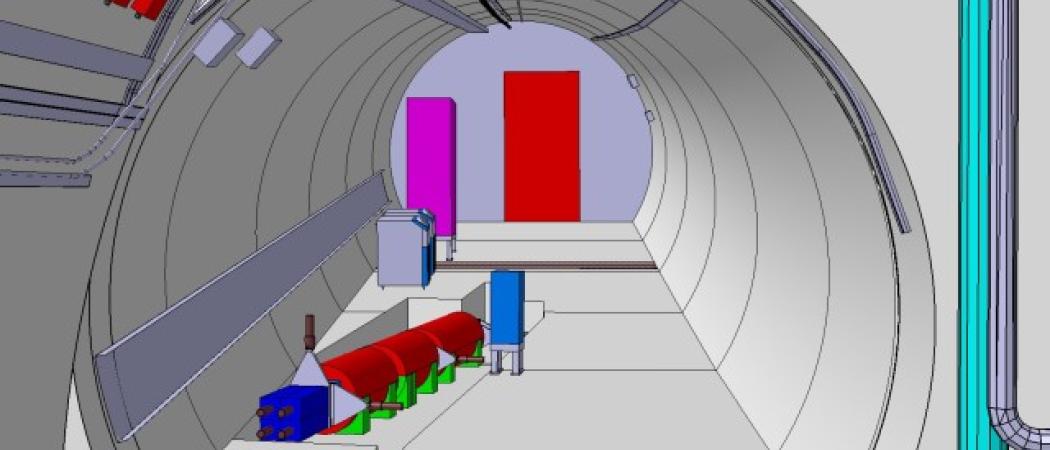
A 3D picture of the planned FASER detector as seen in the TI12 tunnel. The detector is precisely aligned with the collision axis in ATLAS, 480 m away from the collision point. (Image: FASER/CERN)
the CERN Research Board approved a new experiment designed to look for light and weakly interacting particles at the LHC. FASER, or the Forward Search Experiment, will complement CERN’s ongoing physics programme, extending its discovery potential to several new particles. Some of these sought-after particles are associated with dark matter, which is a hypothesised kind of matter that does not interact with the electromagnetic force and consequently cannot be directly detected using emitted light. Astrophysical evidence shows that dark matter makes up about 27% of the universe, but it has never been observed and studied in a laboratory.
With an expanding interest in undiscovered particles, particularly long-lived particles and dark matter, new experiments have been proposed to expand the scientific potential of CERN’s accelerator complex and infrastructure as part of the Physics Beyond Collider (PBC) study, under whose aegis FASER operates. “This novel experiment helps diversify the physics programme of colliders such as the LHC, and allows us to address unanswered questions in particle physics from a different perspective,” explains Mike Lamont, co-coordinator of the PBC study group.
The four main LHC detectors are not suited for detecting the light and weakly interacting particles that might be produced parallel to the beam line. They may travel hundreds of metres without interacting with any material before transforming into known and detectable particles, such as electrons and positrons. The exotic particles would escape the existing detectors along the current beam lines and remain undetected. FASER will therefore be located along the beam trajectory 480 metres downstream from the interaction point within ATLAS. Although the protons in the particle beams will be bent by magnets around the LHC, the light, very weakly interacting particles will continue along a straight line and their “decay products” can be spotted by FASER. The potential new particles would be very collimated with the beam, spreading out very little, therefore allowing a relatively small and inexpensive detector to perform highly sensitive searches.
The detector’s total length is under 5 metres and its core cylindrical structure has a radius of 10 centimetres. It will be installed in a side tunnel along an unused transfer line which links the LHC to its injector, the Super Proton Synchrotron. To allow FASER to be constructed in a quick and affordable way, it will use spare detector parts kindly donated from the ATLAS and LHCb experiments. The collaboration of 16 institutes that is building the detector and will carry out the experiments is supported by the Heising-Simons Foundation and the Simons Foundation.
FASER will search for a suite of hypothesised particles including so-called “dark photons”, particles which are associated with dark matter, neutralinos and others. The experiment will be installed during the ongoing Long Shutdown 2 and start taking data from LHC’s Run 3 between 2021 and 2023.
“It is very exciting to have FASER approved for installation at CERN. It is amazing how the collaboration has come together so quickly and we are looking forward to recording our first data when the LHC starts up again in 2021,” says Jamie Boyd, co-spokesperson of the FASER experiment.
“FASER is a neat physics proposal that addresses a particular aspect in the search for physics beyond the Standard Model and I am pleased to see it being implemented so efficiently,” adds Eckhard Elsen, CERN’s Director for Research and Computing.
This release was first published 7 March 2019 by CERN.




 A unique international forum for public research organisations and companies to connect their external engagement with strategic interests around their R&D system.
A unique international forum for public research organisations and companies to connect their external engagement with strategic interests around their R&D system.